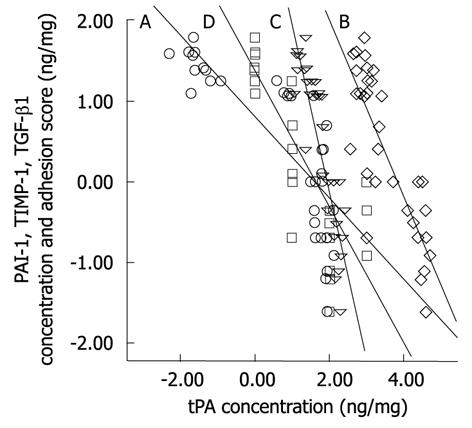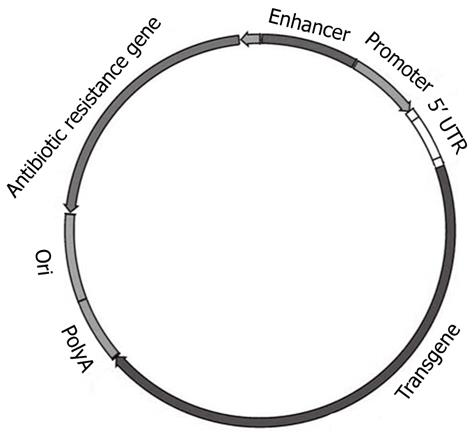Copyright
©2011 Baishideng Publishing Group Co.
World J Gastroenterol. Dec 14, 2011; 17(46): 5049-5058
Published online Dec 14, 2011. doi: 10.3748/wjg.v17.i46.5049
Published online Dec 14, 2011. doi: 10.3748/wjg.v17.i46.5049
Figure 1 The role of trauma, hypoxia, and inflammation in modulating molecular crosstalk in adhesion formation.
tPA: Tissue plasminogen activator; PAI-1: Plasminogen activator inhibitors 1; MMP: Matrix metalloproteinase; TIMP: Tissue inhibitors of MMP; TGF-β1: Transforming growth factor-β; TNF-α: Tumor necrosis factor-α; IL: Interleukin; HIF-1α: Hypoxia inducible factor-1α; VEGF: Vascular endothelial growth factor; CTGF: Connective tissue growth factor.
Figure 2 Correlation analysis was performed using two-tailed Spearmen rank correlation test between tPA with respect to PAI-1 (line A, marker 〇), TIMP-1 (line B, marker ◇), TGF-β1 (line C, marker ▽) or adhesion score (line D, marker □).
Values of tPA, PAI-1, TIMP-1, and TGF-β1 concentration in adhesion tissues were logarithmically transformed to obtain a normal distribution before statistical analysis. There was significant negative correlations (P < 0.01) between human tPA and either of PAI-1 (Spearman rank correlation coefficient, r = -0.89), TIMP-1 (r = -0.73), TGF-β1 (r = -0.87), or adhesion score (r = -0.87). tPA: Tissue plasminogen activator; PAI-1: Plasminogen activator inhibitors 1; TIMP: Tissue inhibitors of MMP; TGF-β1: Transforming growth factor-β.
Figure 3 Skeleton of a conventional plasmid.
Ori: Origin of replication.
- Citation: Atta HM. Prevention of peritoneal adhesions: A promising role for gene therapy. World J Gastroenterol 2011; 17(46): 5049-5058
- URL: https://www.wjgnet.com/1007-9327/full/v17/i46/5049.htm
- DOI: https://dx.doi.org/10.3748/wjg.v17.i46.5049











